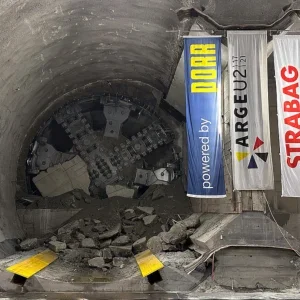The BBT, the heart of the new rail connection between Munich and Verona, runs for 55 km between Innsbruck and Franzensfeste (Fortezza). Including the existing Innsbruck bypass, which will connect with the BBT, the stretch of tunnel through the Alps comes to a total of 64 km, making it the longest underground railway connection in the world. The BBT consists of two single-track tubes, each 8.1 m wide, at a distance of 70 m from one another. The two tubes are linked at every 333m through connecting side tunnels as escape routes in emergencies. The nearly horizontal stretch of tunnel avoids the gradients of the existing, more than 140-year-old Brenner Railway. The total cost for the project, which is to be completed in 2025, is estimated at EUR 8.6bn (USD 11.7bn).
As well, on June 5 it was announced Züblin Scandinavia AB, a Swedish subsidiary of STRABAG SE, had been awarded as leader and main shareholder in joint venture to build the Marieholmstunnel project, an immersed tunnel passing under the river Göta älv in the city of Gothenburg. The design & build agreement, which also comprises the mechanical and electrical works and which has a total contract value of about EUR 170M (USD 231M), was signed on 4 June 2014. Owner of the project is the Swedish road and railway authority Trafikverket, to which the tunnel is to be handed over in October 2020.
Marieholmstunnel is a road tunnel consisting of three lanes in either direction with a service tunnel in the centre and a designed lifetime of 120 years. Züblin will construct three tunnel elements of 100 m in length each on site in a drydock and immerse them at their final location in a trench dredged into the river bed. On either side of the immersed tunnel section, cut & cover tunnels will be built in deep excavation pits continuing in ramp and trough sections. Special consideration will be given to the environment, e. g. the flora and fauna of the river Göta älv, during all phases of construction. The installation of all mechanical and electrical systems also forms part of the contract, which includes an option to operate and maintain the tunnel for five years after completion.
The project will start just after the handover of Trafikverket’s Söderströmstunnel in Stockholm, a project of similar size and complexity executed by Züblin also as an immersed tunnel.







